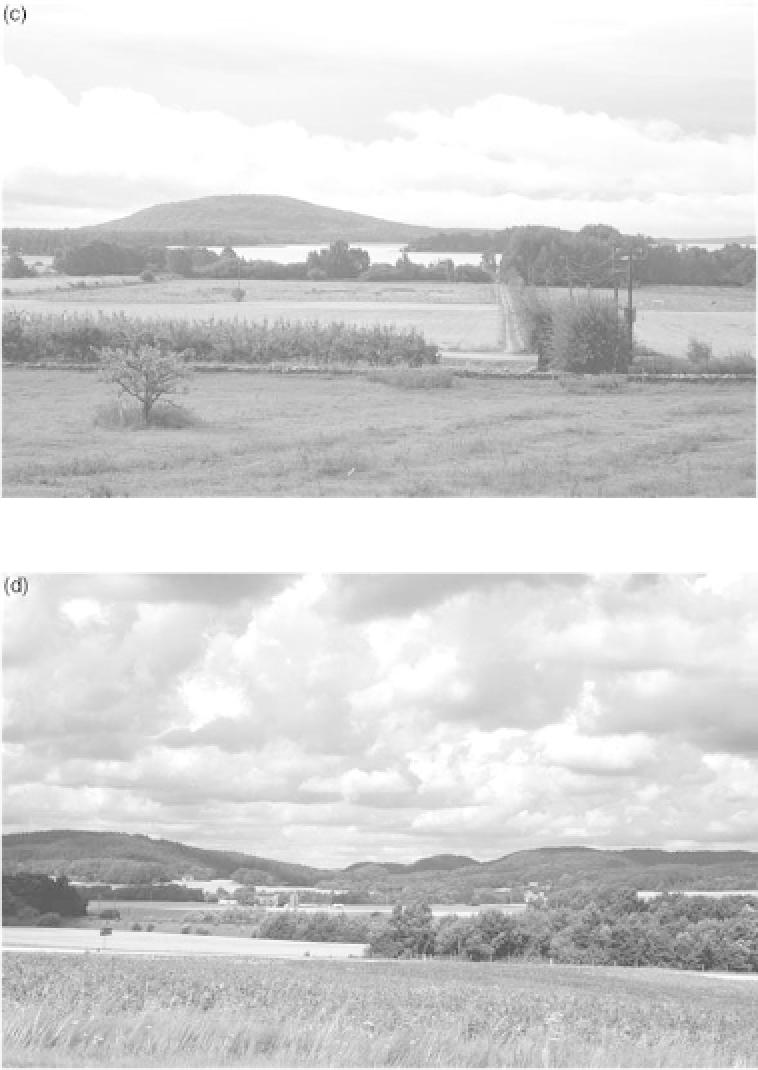Geology Reference
In-Depth Information
Plate 15.2
Continued
After a Neogene rise followed by erosion of Upper
Cretaceous-Mid-Miocene cover rocks, the South
Småland Peneplain developed, probably under Late
Miocene dry climates, as a gently inclined flat rock
surface with few residual hills (a pediplain) (Figure
15.9f ). South- and west-facing escarpments formed
along the elevated rim of the sub-Cambrian peneplain.
Finally, after a last Neogene uplift episode, the sub-
Cretaceous hilly relief was re-exposed along the coasts
towards the south-east and the west, while the flat sub-
Cambrian peneplain re-appeared at the surface in the
northern and eastern part of south Sweden. Locally,
sub-Cambrian facets reappeared in western Sweden
(Figure 15.9g).

